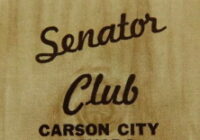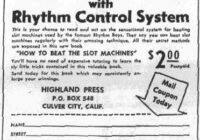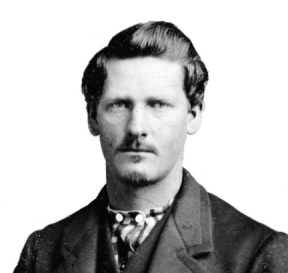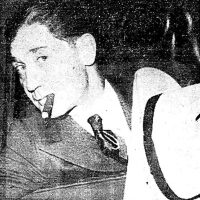|
Listen to this blog post here
Getting your Trinity Audio player ready...
|
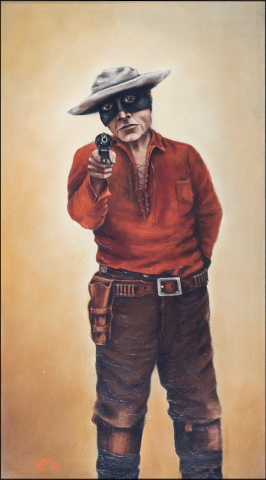
“Hands Up!” by Joachim Lüdcke
1891-1935
“No matter in which position you face it, whether from front, above, below or at either side, the subject has you constantly under his eyes and his ‘gun.’ In fact, as you move, the figure appears to move with you.” This is how Reno Chief of Police John “Jack” M. Kirkley described the gunman in Hands Up!, the painting that adorned a wall of his office during his tenure, from 1919 to 1935.
The work of art was more than eye candy. An actual 19th century gambling-related crime in Nevada had inspired it.
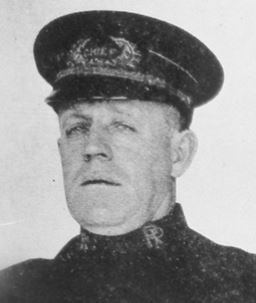
Kirkley
In and Out
On Thursday, April 9, 1891 at about 11:30 p.m., “a tall man with a black silk handkerchief with eye-holes in over his face” armed with a six-shooter entered the faro room of Al White’s Palace Hotel and robbed the dealer, James Conroy, of about $800, a significant amount back then, reported the Daily Nevada State Journal (April 10, 1891).
Soon after, the police arrested a man who had $270 in gold coins and a 0.48-caliber revolver in his valise. He identified himself as Thomas Hale, a detective for the Chicago, Illinois-based Pinkerton National Detective Agency. His real name was Thomas H. Horn, Sr., but because he was working undercover in the area on a railroad wrecking case, he was reticent to tell it to them. Horn didn’t have the full $800 on him, so police theorized he’d had an accomplice, but they never identified or found one.
Horn went to trial for the crime, but the jury couldn’t decide one way or the other.
A Strong Defense
The state of Nevada retried Horn in September. During the proceedings, witnesses identified him as having been the robber. They described how he allegedly had come on the scene and yelled, “Hands up!” Then he’d held at bay numerous employees and gamblers, known to be gunfighters, and while doing so, had gathered the money and fled.

Horn
During cross-examination, Horn’s attorney highlighted these claims as ludicrous. He noted it was incredulous to think one person could control a dozen, gun-trained and -toting men for a period of time during which not one of them would resist or make a move.
William A. Pinkerton, superintendent of the agency bearing his name, testified that Horn in fact was a detective employed by him and had been working a case in Northern Nevada at the time of his arrest. The jury acquitted the defendant.
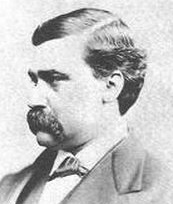
Pinkerton
Supposedly, the actual bandit remained on the loose and continued robbing people throughout the western states.
It Is Possible
Joachim Lüdcke, known in the American West as The Cowboy Artist, watched Horn’s trial in court. He boasted he could depict a man covering, with a pistol, numerous people simultaneously. Using an experienced Spokane scout and trapper nicknamed Death on the Trail as a model, Lüdcke created a watercolor version of Hands Up!.
H.G. “Doc” Brown, the owner of the The Owl Club in Spokane, Washington who knew Lüdcke, displayed this original in his gambling-saloon. Pinkerton spotted the artwork there. Given his connection to the story behind it, he asked Brown if he’d have Lüdcke paint a life-sized version for him in oil. The Cowboy Artist did, and Pinkerton hung the piece in his office.* The Pinkerton agency later used the image in its advertising.
A copy of this oil painting is what Kirkley displayed in his city hall office.
The Actual Perpetrator
Two years later, the Pinkerton agency tracked down and arrested the actual person behind the Reno faro bank robbery and many other similar crimes, newspapers reported. He was one Ed Wilson of Gifford, Iowa (according to The Jewelers’ Circular & Horological Review), aka Frank Shercliffe (or Shercliff), aka Kid McCoy, aka James Burke. Detectives caught up with him in Colorado.
The 20-something-year-old with several aliases was “one of the most daring, desperate, uncompromising of highwaymen and general robbers,” described The Cedar Rapids Evening Gazette (Sept. 23, 1893). “The number of his crimes can only be guessed at, but their quality and the character of the man himself are so thoroughly well known that the police of the entire west say he is the hardest man they ever had to cope with.”
Wilson’s known offenses included robbing faro banks in Tacoma, Washington and San Bernardino, California in addition to the one in Reno and forcefully relieving two women of their diamonds in Salt Lake City.
Ultimately, the desperado was convicted of robbing a traveling jewelry salesman of $15,000 worth of uncut diamonds in November 1892 on a train going from Omaha, Nebraska to Sioux City, Iowa. A judge sentenced him to 17 years in the Iowa State Penitentiary.
Subsequently, Wilson was released on parole, which he then violated by leaving the state. His next run-in with law enforcement was in 1901 in Kansas City, Missouri, when police there arrested him on suspicion of stealing men’s traveling bags. During the takedown, Wilson tried to escape, and officers shot him in the foot. They returned him to Iowa.
The Final Twist
It may have been Horn after all who perpetrated the Reno faro bank heist, and he and the Pinkerton agency conspiratorially pinned it on Wilson, a known jewel thief.
According to podcaster Simone Whitlow, “After this incident [in Reno] other Pinkertons began to view Horn as a ‘dirty cop,’ and would coerce him to move on to greener pastures – quite literally. His next role [was] officially a farm hand – unofficially an enforcer – for the Swan Land and Cattle Company, Wyoming.”
——————————–
* The original Hands Up! oil painting sold for $9,440 at auction in 2019.

